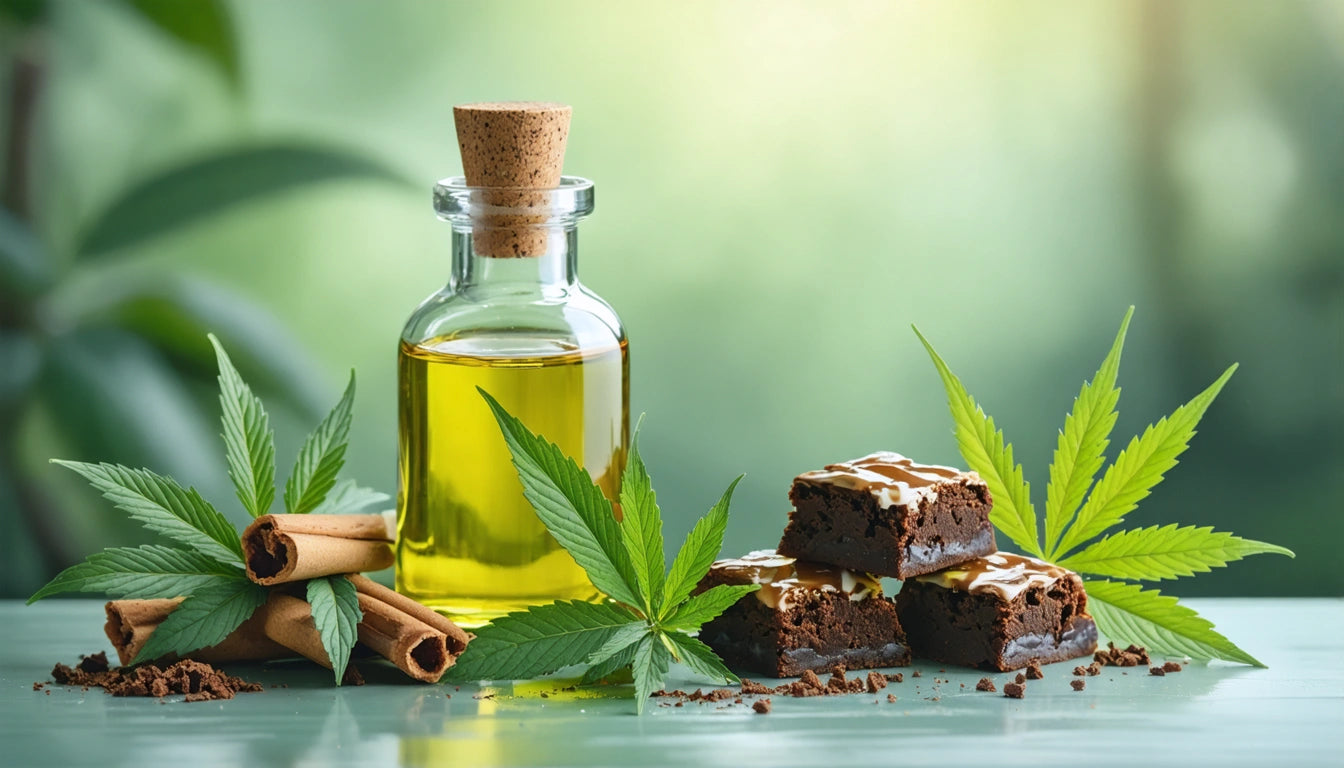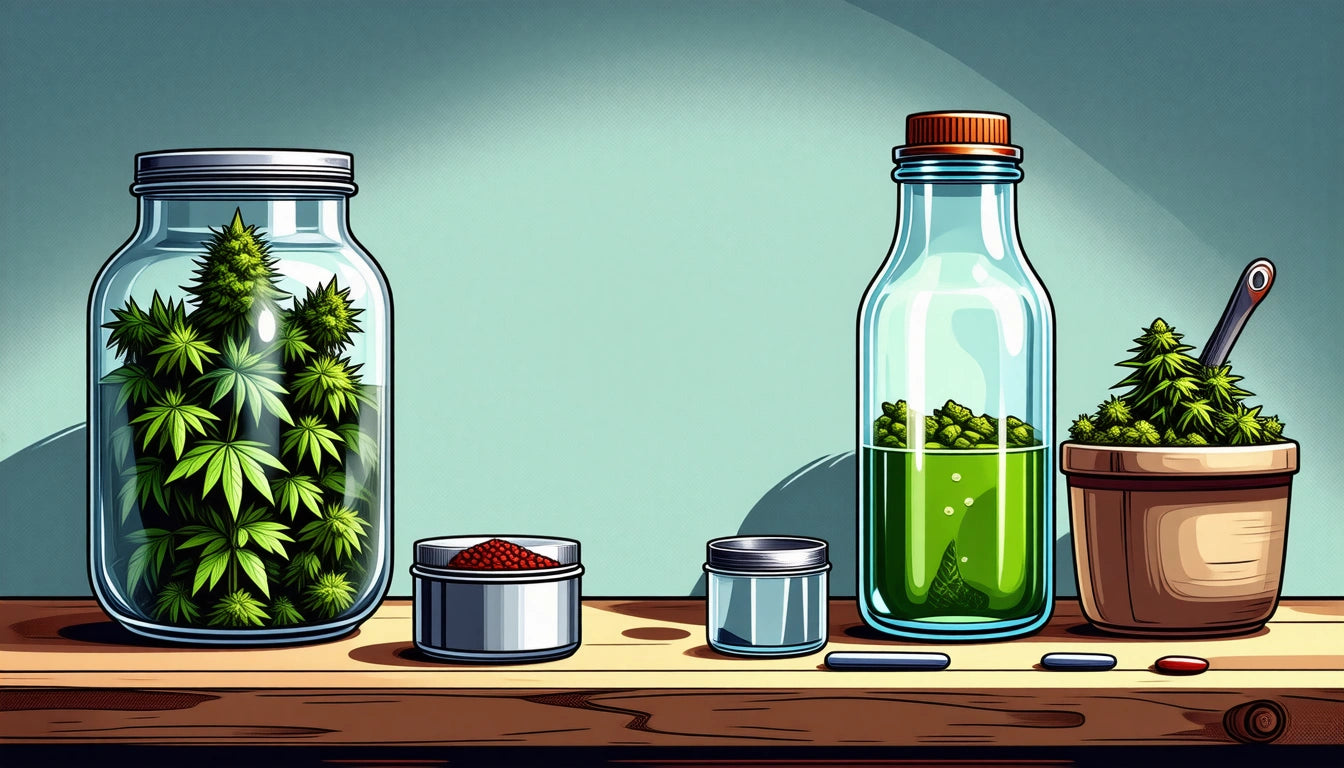Table of Contents
- What is Canna Oil and Why Make It?
- Ingredients and Equipment Needed
- Step-by-Step Guide to Making Canna Oil
- How to Make Canna Coconut Oil
- Cooking with Canna Oil: Tips and Recipes
- Storage, Shelf Life, and Potency Considerations
- Cannabutter vs Coconut Oil: Which to Choose?
- Advanced Techniques for Cannabis Culinary Enthusiasts
How to Make and Use Canna Oil: A Guide to Cooking with Cannabis
Cannabis-infused oils have become a cornerstone of homemade edibles, offering versatility, potency, and ease of use that make them perfect for both novice and experienced cannabis chefs. Whether you're wondering how to make canna oil for brownies or seeking the best canna oil recipe for general cooking, this comprehensive guide will walk you through everything you need to know.
What is Canna Oil and Why Make It?
Canna oil is simply cooking oil infused with the cannabinoids and terpenes from cannabis flower. The fat molecules in oil effectively bind with THC and CBD during the infusion process, creating a versatile cooking ingredient that can be used in virtually any recipe that calls for oil.
Making your own canna oil offers several advantages over store-bought options:
- Complete control over potency and strain selection
- Cost-effectiveness compared to pre-made products
- Ability to customize with complementary herbs or flavors
- Confidence in the quality of ingredients used
Ingredients and Equipment Needed
Basic Ingredients:
- 7-14 grams of decarboxylated cannabis flower
- 2 cups of your preferred cooking oil (olive, canola, coconut, etc.)
- Water (optional, for certain methods)
Essential Equipment:
- Grinder
- Baking sheet (for decarboxylation)
- Double-boiler, slow cooker, or saucepan
- Thermometer
- Cheesecloth or fine mesh strainer
- Storage container (preferably glass)
To ensure your cannabis stays at optimal humidity levels during storage before processing, humidity control packs can help maintain freshness and potency of your flower, preserving the terpenes that contribute to the final flavor profile of your oil.
Step-by-Step Guide to Making Canna Oil
Step 1: Decarboxylation
Before infusion, you must decarboxylate your cannabis to activate the THC and CBD:
- Preheat your oven to 240 °F (115 °C)
- Break up cannabis buds into small pieces
- Spread evenly on a baking sheet
- Bake for 30-40 minutes, stirring occasionally
- Cannabis should turn light to medium brown and be dry but not burnt
Step 2: Infusion Process
Once decarboxylated, it's time to infuse your oil:
- Combine decarboxylated cannabis and oil in your cooking vessel
- Heat the mixture at 160-200 °F (70-93 °C) for 2-3 hours
- Stir occasionally and monitor temperature to avoid scorching
- The oil should never reach a full boil
Highlight: Maintaining proper temperature is crucial when making canna oil. Too hot will degrade cannabinoids, while too cool will result in incomplete extraction.
Step 3: Straining and Storage
- Place cheesecloth over a clean container
- Slowly pour the oil mixture through the cheesecloth
- Allow to drain naturally without squeezing (to prevent plant material from passing through)
- Transfer to an airtight container and label with date and potency
- Store in a cool, dark place or refrigerate
How to Make Canna Coconut Oil
Coconut oil has become increasingly popular for cannabis infusions due to its high fat content, which can extract cannabinoids more efficiently than other oils. Learning how to make canna coconut oil follows the same basic process as other oils, with a few specific considerations:
- Use unrefined, virgin coconut oil for best results
- Coconut oil solidifies at room temperature, making it ideal for capsules and topicals
- The natural flavor complements many sweet recipes
- Can be substituted 1:1 for butter in most recipes
Cooking with Canna Oil: Tips and Recipes
Once you've mastered how to make canabis oil, it's time to cook with it. Here are some tips for success:
Temperature Considerations:
THC begins to degrade at temperatures above 340 °F (170 °C), so low and slow cooking methods work best. For high-temperature recipes, consider:
- Adding the oil after cooking when possible
- Using canna oil as a finishing oil or dressing
- Reducing oven temperatures and extending cooking times
Popular Recipes Using Canna Oil:
- Brownies and baked goods
- Salad dressings and marinades
- Pasta dishes and sauces
- Sautéed vegetables
- No-bake desserts
For those specifically wondering how to make canna oil for brownies, the process is identical to making any canna oil, but choosing a neutral-flavored base oil like refined coconut oil or canola oil works best for baking applications. This guide offers additional tips for cooking-specific oils.
Storage, Shelf Life, and Potency Considerations
Proper storage is essential for maintaining potency and preventing spoilage:
- Store in an airtight, opaque container
- Keep refrigerated for extended shelf life (3-6 months)
- Freezing can extend shelf life up to a year
- Label with date, strain, and approximate potency
To determine potency, consider the THC percentage of your starting material and the amount used. For example, 10 grams of 15% THC cannabis contains approximately 1500mg THC. When infused into 2 cups of oil, each tablespoon would contain roughly 62.5mg THC (assuming perfect extraction).
Cannabutter vs Coconut Oil: Which to Choose?
When deciding between cannabutter and coconut oil, consider these factors:
- Cannabutter: Traditional flavor, works well in baking, familiar texture
- Coconut Oil: Higher fat content for better extraction, longer shelf life, vegan-friendly
This comparison of cannabutter techniques can help you decide which infusion base is right for your needs.
Advanced Techniques for Cannabis Culinary Enthusiasts
Once you've mastered basic canna oil, you might want to explore more advanced techniques:
Strain-Specific Infusions:
Different cannabis strains can complement different cuisines. Consider:
- Citrusy sativas for Mediterranean dishes
- Earthy indicas for rich, hearty foods
- Berry-noted hybrids for desserts
Multi-Stage Infusions:
For culinary enthusiasts, try infusing herbs and spices alongside cannabis:
- Rosemary and cannabis in olive oil for savory applications
- Vanilla and cannabis in coconut oil for desserts
- Chili and cannabis in avocado oil for spicy dishes
While traditional canna oil is versatile, exploring these variations can elevate your cannabis cuisine to new heights. For those interested in expanding their cannabis cooking repertoire, this comprehensive guide covers additional infused products beyond basic oils.
With these techniques and tips, you're well-equipped to create high-quality canna oil for all your culinary cannabis adventures. Remember to start with small doses when consuming, especially with homemade products where potency can vary.











Leave a comment
All comments are moderated before being published.
This site is protected by hCaptcha and the hCaptcha Privacy Policy and Terms of Service apply.